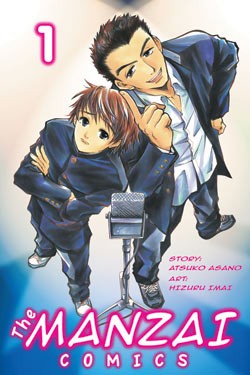Creator: Takehiko Inoue U.S. publisher: Viz Media ISBN: 9781421519890 Released: July 2008 Original release: 2001 Awards: Japan Media Arts Award When I first began reading Takehiko Inoue's …
Bookshelf Overload: February 2014
February may be a short month, but that didn't seem to have much of an impact on how many manga and other goodies made their way into my possession. It's been a little while since there's been an …
No. 6, Volume 5
Creator: Hinoki Kino Original story: Atsuko Asano U.S. publisher: Kodansha ISBN: 9781612623597 Released: February 2014 Original release: 2012 As much as I would like to read them, it is highly …
Manga Giveaway: Smuggler Giveaway
For being the shortest month of the year, February seems to be lasting a long time for me. But the end is almost here, which means it's time for another manga giveaway! This month you all (well, …
My Week in Manga: February 17-February 23, 2014
My News and Reviews Two reviews posted last week! First up was Jeffery Angles' Writing the Love of Boys: Origins of Bishōnen Culture in Modernist Japanese Literature. It's a very interesting work …
Continue Reading about My Week in Manga: February 17-February 23, 2014 →
Mobile Suit Gundam: The Origin, Volume 4: Jaburo
Creator: Yoshikazu Yasuhiko Original story: Yoshiyuki Tomino and Hajime Yatate U.S. publisher: Vertical ISBN: 9781935654988 Released: December 2013 Original release: 2008 Yoshikazu Yasuhiko's …
Continue Reading about Mobile Suit Gundam: The Origin, Volume 4: Jaburo →




